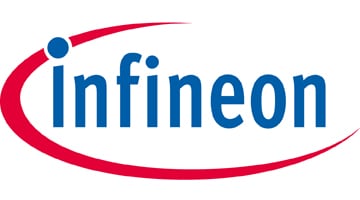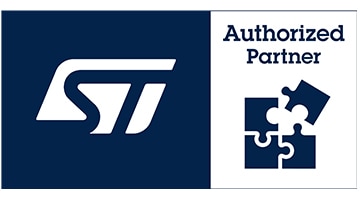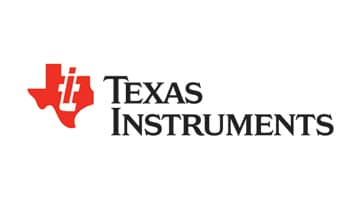Overview
| Topology | Other Topology |
| Switching frequency | 1-800 kHz |
| IC revision | 8 |
Description
The SPIRIT1 is a very low-power RF transceiver, intended for RF wireless applications in the sub-1 GHz band. It is designed to operate both in the license-free ISM and SRD frequency bands at 169, 315, 433, 868, and 915 MHz, but can also be programmed to operate at other additional frequencies in the 300-348 MHz, 387-470 MHz, and 779-956 MHz bands. The air data rate is programmable from 1 to 500 kbps, and the SPIRIT1 can be used in systems with channel spacing of 12.5/25 kHz, complying with the EN 300 220 standard. It uses a very small number of discrete external components and integrates a configurable baseband modem, which supports data management, modulation, and demodulation. The data management handles the data in the proprietary fully programmable packet format also allows the M-Bus standard compliance format (all performance classes).
However, the SPIRIT1 can perform cyclic redundancy checks on the data as well as FEC encoding/decoding on the packets. The SPIRIT1 provides an optional automatic acknowledgement, retransmission, and timeout protocol engine in order to reduce overall system costs by handling all the high-speed link layer operations.
Moreover, the SPIRIT1 supports an embedded CSMA/CA engine. An AES 128-bit encryption co-processor is available for secure data transfer. The SPIRIT1 fully supports antenna diversity with an integrated antenna switching control algorithm. The SPIRIT1 supports different modulation schemes: 2-FSK, GFSK, OOK, ASK, and MSK. Transmitted/received data bytes are buffered in two different three-level FIFOs (TX FIFO and RX FIFO), accessible via the SPI interface for host processing.
Features
Frequency bands: 150-174 MHz, 300-348
MHz, 387-470 MHz, 779-956 MHz
Modulation schemes: 2-FSK, GFSK, MSK,
GMSK, OOK, and ASK
Air data rate from 1 to 500 kbps
Very low power consumption (9 mA RX and 21 mA TX at +11 dBm)
Programmable RX digital filter from 1 kHz to 800 kHz
Programmable channel spacing (12.5 kHz min.)
Excellent performance of receiver sensitivity (-
118 dBm), selectivity, and blocking
Programmable output power up to +16 dBm
Fast startup and frequency synthesizer settling
time (6 μs)
Frequency offset compensation
Integrated temperature sensor
Battery indicator and low battery detector
RX and TX FIFO buffer (96 bytes each)
Configurability via SPI interface
Automatic acknowledgment, retransmission, and timeout protocol engine
AES 128-bit encryption co-processor
Antenna diversity algorithm
Fully integrated ultra low power RC oscillator
Wake-up on internal timer and wake-up on external event
Flexible packet length with dynamic payload
length
Sync word detection
Address check
Automatic CRC handling
FEC with interleaving
Digital RSSI output
Programmable carrier sense (CS) indicator
Automatic clear channel assessment (CCA)
before transmitting (for listen-before-talk
systems). Embedded CSMA/CA protocol
Programmable preamble quality indicator (PQI)
Link quality indication (LQI)
Whitening and de-whitening of data
Wireless M-BUS, EN 300 220, FCC CFR47 15
(15.205, 15.209, 15.231, 15.247, 15.249), and
ARIB STD T-67, T93, T-108 compliant
QFN20 4x4 mm RoHS package
Operating temperature range from -40 °C to 85 °C
Typical applications
- AMR (automatic meter reading)
- Wireless fire and security alarm systems
- Industrial monitoring and control
- WSN (wireless sensors network)
- Point-to-point wireless link
- Home and building automation
More information
Products
| Order Code | Datasheet | Simulation | Downloads | Status | Product series | L (µH) | IR (mA) | Q (%) | fres (MHz) | Mount | Z @ 100 MHz (Ω) | Zmax (Ω) | Test Condition Zmax | IR 2 (mA) | RDC max. (Ω) | Type | Samples | |
|---|---|---|---|---|---|---|---|---|---|---|---|---|---|---|---|---|---|---|
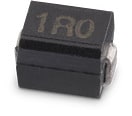 | 74476402 | SPEC PCN pendingDue to a pending PCN, a modification of the component will be implemented soon. Please find the PCN below. If you have further questions please get in contact with our sales staff. | – | 9 files | Active i| Production is active. Expected lifetime: >10 years. | WE-GF SMT Wire Wound Inductor | 2.2 | 320 | 30 | 100 | SMT | – | – | – | – | 1 | – | |
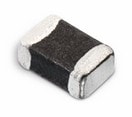 | 74279206 | SPEC | 9 files | Active i| Production is active. Expected lifetime: >10 years. | WE-CBF SMT EMI Suppression Ferrite Bead | – | 2000 | – | – | SMT | 30 | 55 | 1000 MHz | 3000 | 0.025 | High Current |
| Order Code | Datasheet | Simulation | |
|---|---|---|---|
 | 74476402 | SPEC PCN pendingDue to a pending PCN, a modification of the component will be implemented soon. Please find the PCN below. If you have further questions please get in contact with our sales staff. | – |
 | 74279206 | SPEC |
| Samples |
|---|
| Order Code | Datasheet | Simulation | Downloads | Status | Product series | L (µH) | IR (mA) | Q (%) | fres (MHz) | Mount | Z @ 100 MHz (Ω) | Zmax (Ω) | Test Condition Zmax | IR 2 (mA) | RDC max. (Ω) | Type | Samples |
|---|

